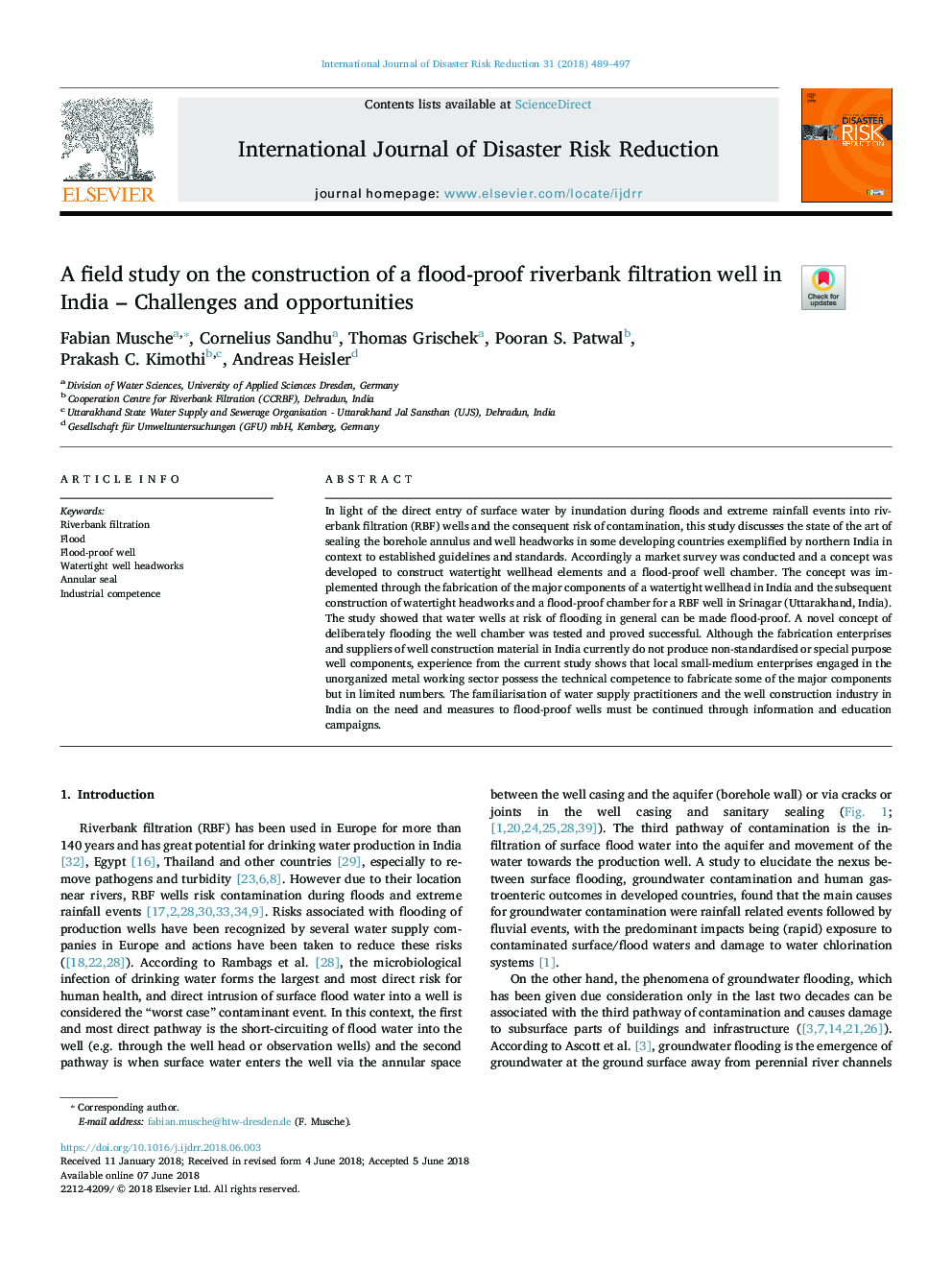| Article ID | Journal | Published Year | Pages | File Type |
|---|---|---|---|---|
| 7471176 | International Journal of Disaster Risk Reduction | 2018 | 9 Pages |
Abstract
In light of the direct entry of surface water by inundation during floods and extreme rainfall events into riverbank filtration (RBF) wells and the consequent risk of contamination, this study discusses the state of the art of sealing the borehole annulus and well headworks in some developing countries exemplified by northern India in context to established guidelines and standards. Accordingly a market survey was conducted and a concept was developed to construct watertight wellhead elements and a flood-proof well chamber. The concept was implemented through the fabrication of the major components of a watertight wellhead in India and the subsequent construction of watertight headworks and a flood-proof chamber for a RBF well in Srinagar (Uttarakhand, India). The study showed that water wells at risk of flooding in general can be made flood-proof. A novel concept of deliberately flooding the well chamber was tested and proved successful. Although the fabrication enterprises and suppliers of well construction material in India currently do not produce non-standardised or special purpose well components, experience from the current study shows that local small-medium enterprises engaged in the unorganized metal working sector possess the technical competence to fabricate some of the major components but in limited numbers. The familiarisation of water supply practitioners and the well construction industry in India on the need and measures to flood-proof wells must be continued through information and education campaigns.
Keywords
Related Topics
Physical Sciences and Engineering
Earth and Planetary Sciences
Geophysics
Authors
Fabian Musche, Cornelius Sandhu, Thomas Grischek, Pooran S. Patwal, Prakash C. Kimothi, Andreas Heisler,
